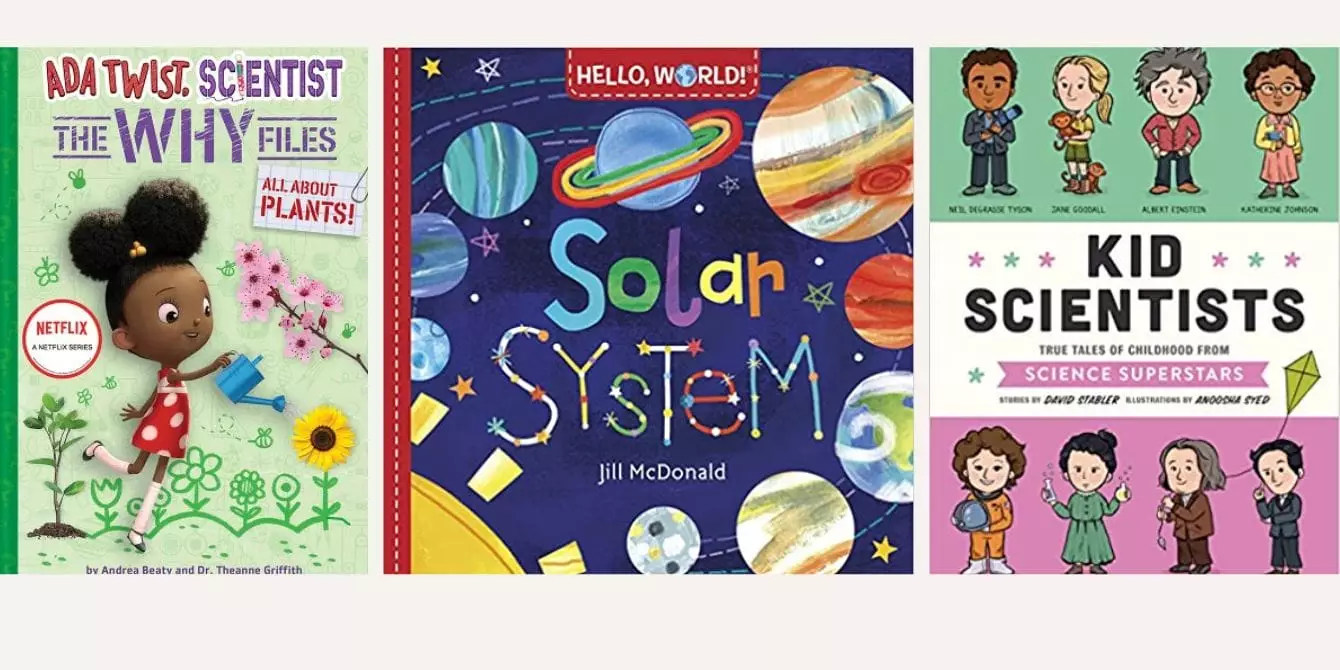From an early age, children exhibit a profound sense of wonder towards the world around them. Observing a simple blade of grass or inquiring “why” about the myriad phenomena in their lives, kids are inherently curious, driven to explore, experiment, and learn. This inquisitiveness is the foundation of scientific thought and discovery. The challenge for caregivers and educators is to cultivate this fascination through engaging, age-appropriate literature. Thus, it becomes essential to introduce an array of STEM (Science, Technology, Engineering, and Mathematics) books that not only feed this curiosity, but also make scientific subjects relatable to young readers.
Writing topics in a simplified yet engaging manner is crucial to engaging children in science. Books filled with interactive experiments encourage kids to dive deeper into scientific inquiry. Titles that offer hands-on activities, such as those with included “try it yourself” experiments, provide opportunities for collaborative exploration alongside adults. This kind of shared experience enhances the learning process and allows children to visualize complex concepts—like how bats navigate using echolocation—through a more tactile approach.
Importantly, literature featuring diverse scientific themes promotes a broader understanding of our world and universe. A compelling example is a book that paints vivid pictures of bioluminescent creatures through a gentle, rhyming narrative. This creative approach not only captivates young minds but also enriches their knowledge of natural phenomena beyond common comprehension.
Anatomy can be a daunting subject for children, but books that simplify these complexities provide clarity and engagement. Utilizing die-cut pages and layered illustrations, some anatomy books introduce critical components of the human body, like the organ systems, in a manner designed to intrigue even the youngest readers. Books tailored for children aged 7 to 10 can be particularly effective, as they balance educational value with engaging imagery, ensuring that children remain captivated. As they grow, these resources remain accessible, allowing independent reading and exploration at a pace suited to the child’s development.
In an age where pop culture permeates every aspect of life, books that draw inspiration from popular media can have a special appeal. For example, spin-off texts from beloved series like “Ada Twist, Scientist” offer children entry points into scientific topics such as botany. Structured in a scrapbook format, these books engage early elementary students and provide a narrative-driven way to explore difficult subjects. Literacy and science merge seamlessly in such literature, fostering a love for reading while igniting scientific interest.
Similarly, expansive, beautifully illustrated volumes exploring specific themes, such as fungi, resemble museum-quality books filled with exquisite pictures and substantial content. Timely, educational, and visually appealing, these resources cater not only to children but also to adults who wish to enhance their understanding of various scientific topics.
In light of current events, it’s crucial that children comprehend the science behind contemporary issues, such as the COVID-19 pandemic. Educational literature about virology and vaccines must be readily available, ensuring kids grasp fundamental principles of health and safety. Engaging narratives that break down complicated topics make these concepts relatable, transforming complex scientific discussions into accessible information.
Books presenting engaging stories that dissect challenging scientific principles while addressing relevance to everyday life empower children to be better informed and equipped to tackle the world around them.
The journey doesn’t stop at primary education. Young readers aged 8-12 can build upon their foundational knowledge through series that address scientific inquiry in entertaining formats. Series like “Kid Legends” introduce children to pivotal moments in the lives of famous scientists, highlighting how curiosity and resilience lead to monumental discoveries. By making the lives of these scientists relatable, authors encourage young readers to see themselves in the shoes of these innovators, fostering a sense of empowerment.
In a similar spirit, illustrated works focusing on remarkable women in science from various eras provide critical perspectives that can inspire and educate. Inclusive representation in scientific literature is essential in promoting awareness and ambition among diverse groups of children.
To cultivate the next generation of scientists, educators and parents must collectively invest in fostering a vibrant culture of curiosity through literature. By introducing children to diverse, engaging scientific texts, we sow the seeds for a lifetime journey of learning. As young minds encounter the beauty, complexity, and joy of exploration through reading, they are shaped into lifelong learners equipped to navigate and contribute to an increasingly scientific world.

